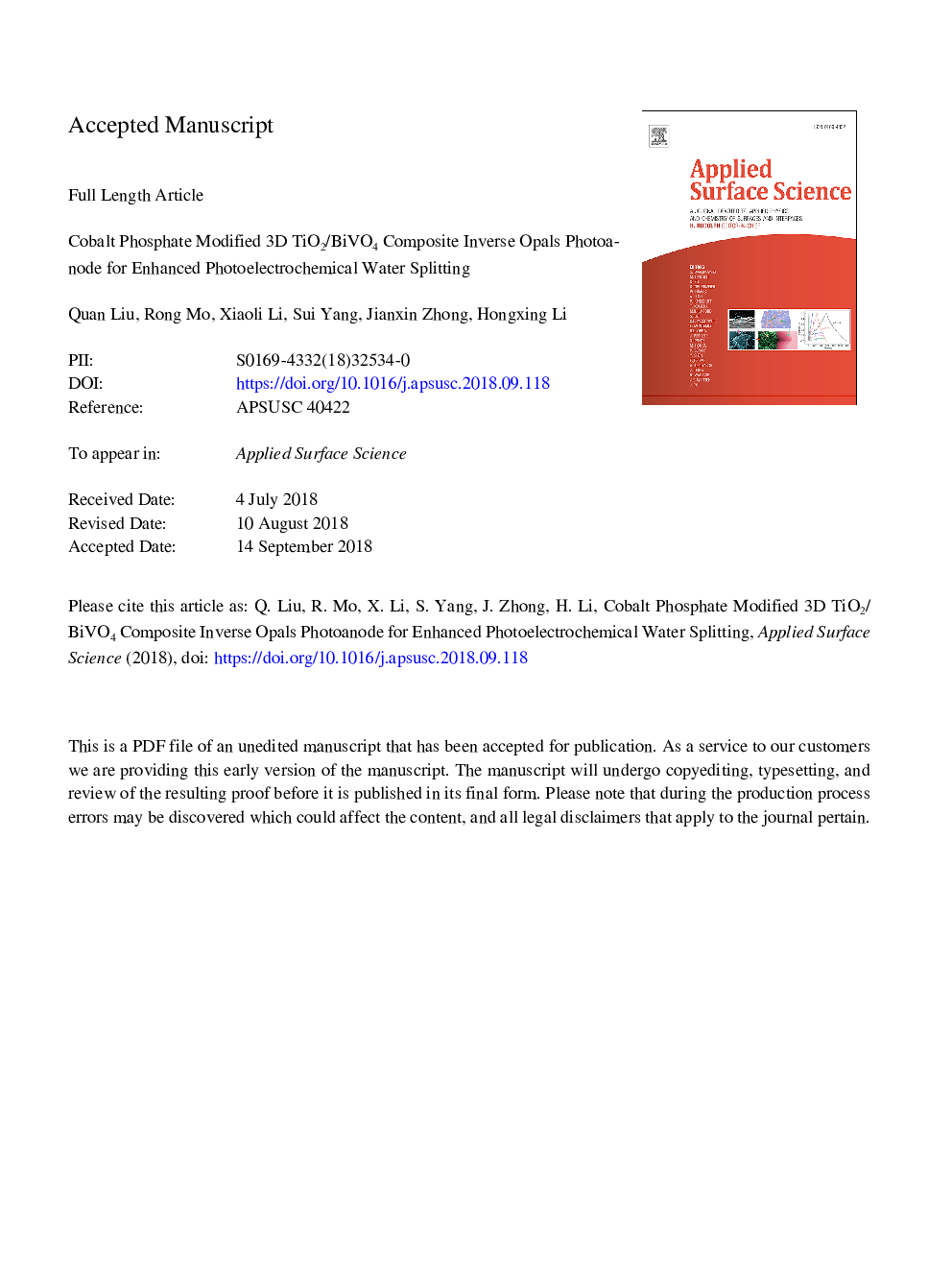| Article ID | Journal | Published Year | Pages | File Type |
|---|---|---|---|---|
| 10155074 | Applied Surface Science | 2019 | 22 Pages |
Abstract
The search for highly efficient, stable and cost-effective photoanode materials for the photoelectrochemical solar water splitting process has attracted much attention over the past decades. In this work, we synthesized a TiO2 inverse opal composite photoelectrode that was sensitized with BiVO4 as light absorber and was further integrated with a cobalt-phosphate (Co-Pi) co-catalyst to boost the kinetics of surface water oxidation reaction. The prepared TiO2/BiVO4/Co-Pi electrode exhibited both improved visible light absorption and a more efficient charge transfer relay for solar driven water splitting. The optimized TiO2/BiVO4/Co-Pi photoanode yielded a photocurrent density of â¼4.96â¯mA/cm2 at 0.63â¯V versus Ag/AgCl, leading to a photo-to-energy conversion efficiency that was 9.0 times better than TiO2 inverse opals and 2.3 times better than the TiO2/BiVO4 photoanode. This current work provides a strategy for the design other integrated photoelecreodes that will combine light absorber and co-catalyst for more efficient photoelectrochemical water splitting applications.
Related Topics
Physical Sciences and Engineering
Chemistry
Physical and Theoretical Chemistry
Authors
Quan Liu, Rong Mo, Xiaoli Li, Sui Yang, Jianxin Zhong, Hongxing Li,
